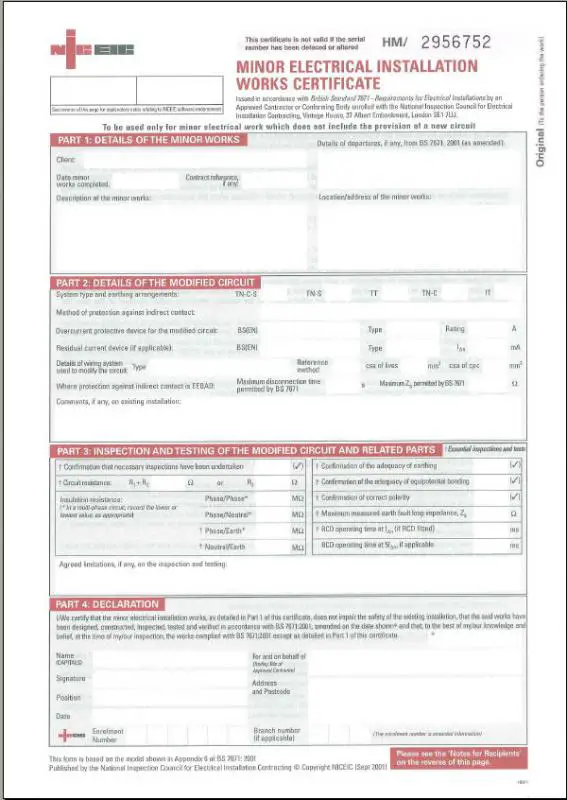I read in page 9 of Chris Kitchers book “Practical Guide to Inspection Testing & Certification of Electrical Installations” that an Electrical Installation Certificate – required for –“……when a circuit is altered and the alteration requires the changing of the protective device”.
Much the same is repeated on page 11 “The EIC must be issued for a completely new installation or new circuit; this would include alterations to a circuit which would result in changing of a protective device or the renewal of a distribution board.”
I see no reference in BS7671:2008 to this.
The notes to the EIC on p 334 state EIC only used for addition alteration where new circuits are introduced.
A “circuit” using the BS7671:2008 definition …to paraphrase horribly….“a collection of bits protected by same protective device”. I take that to be everything downstream of the protective device. Correct ? Or does it include the protective device?
So last week I replaced a 8.5kW shower, straight swop, like for like, use the same 6mm2 cable but with an eye on good practice and BS7671 I swop the original undersized 32A MCB for a 40A RCBO. Thankfully it’s only a 5m run and clipped direct all the way with no insulation so 6mm2 is adequate with Table 4D2A quoting 46A. No new circuit. The circuit isn’t altered as I used the same cable but the protective device is altered for the better.
Later this week I’ll put a spur on an existing ring that is not protected by an RCD – chase the cable in <50mm deep – change the 32A MCB for a 32A RCBO. Not a new circuit but again the protective device is changed for the better.
Last example – say I reuse an old spur for an immersion heater for a lighting circuit but re-use the cable from the CU to the FCU. I swop the old 16A MCB for a 6A RCBO – again the protective device is changed for the better but only an altered circuit.
So an EIC or a MEIWC?
Much the same is repeated on page 11 “The EIC must be issued for a completely new installation or new circuit; this would include alterations to a circuit which would result in changing of a protective device or the renewal of a distribution board.”
I see no reference in BS7671:2008 to this.
The notes to the EIC on p 334 state EIC only used for addition alteration where new circuits are introduced.
A “circuit” using the BS7671:2008 definition …to paraphrase horribly….“a collection of bits protected by same protective device”. I take that to be everything downstream of the protective device. Correct ? Or does it include the protective device?
So last week I replaced a 8.5kW shower, straight swop, like for like, use the same 6mm2 cable but with an eye on good practice and BS7671 I swop the original undersized 32A MCB for a 40A RCBO. Thankfully it’s only a 5m run and clipped direct all the way with no insulation so 6mm2 is adequate with Table 4D2A quoting 46A. No new circuit. The circuit isn’t altered as I used the same cable but the protective device is altered for the better.
Later this week I’ll put a spur on an existing ring that is not protected by an RCD – chase the cable in <50mm deep – change the 32A MCB for a 32A RCBO. Not a new circuit but again the protective device is changed for the better.
Last example – say I reuse an old spur for an immersion heater for a lighting circuit but re-use the cable from the CU to the FCU. I swop the old 16A MCB for a 6A RCBO – again the protective device is changed for the better but only an altered circuit.
So an EIC or a MEIWC?





